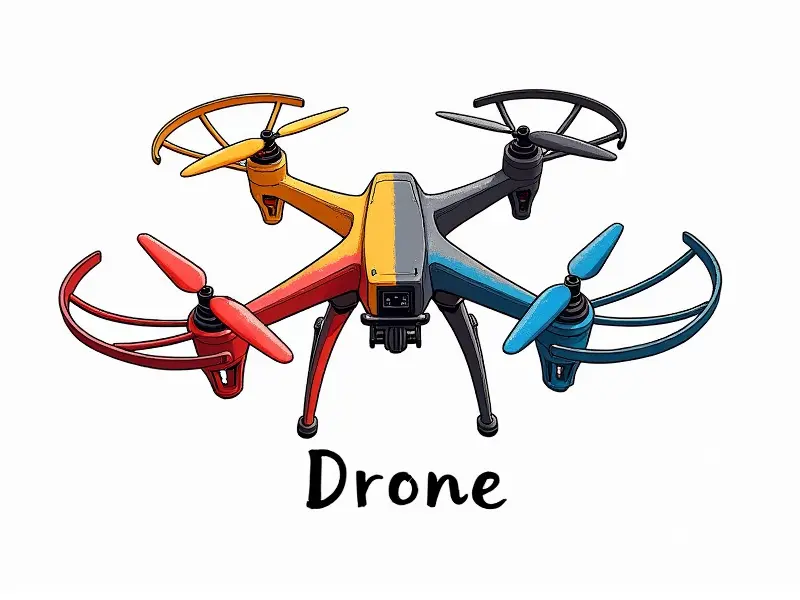DIY FPV setup guide?

DIY FPV Gear Guide
Welcome to the world of First Person View (FPV) drone racing and aerial photography! Building your own FPV setup can be a rewarding experience, offering you the freedom to customize every aspect of your system. In this guide, we'll walk you through everything you need to know about assembling an affordable yet high-quality DIY FPV kit.
Step-by-Step FPV Setup Tutorial
Setting up an FPV system involves several key components: the drone frame, flight controller, power distribution board (PDB), motors and propellers, electronic speed controllers (ESCs), battery, video transmitter (VTX), camera, receiver, goggles, and antennas. Here’s a step-by-step guide to help you get started:
1. Choose Your Drone Frame
- Selecting the right frame: Consider factors such as size, weight, durability, and compatibility with your other components.
- Popular frame options: Carbon fiber frames like the QAV250 or F450 are popular choices for their strength and lightweight design.
2. Install the Flight Controller (FC)
- Selecting a flight controller: Choose between open-source options like Betaflight or commercial controllers from brands such as Taranis.
- Connecting components to FC: Connect ESCs, GPS module, telemetry radio, and other peripherals.
3. Power Distribution Board (PDB) Installation
- PDB selection: Ensure the PDB can handle the power requirements of your motors and electronics.
- Wiring connections: Connect battery, ESCs, flight controller, and other components to the PDB.
4. Motor and Propeller Setup
- Selecting motors and props: Choose high-performance brushless motors compatible with your frame size.
- Propeller mounting: Securely attach the propellers to the motor shafts using prop savers.
5. Electronic Speed Controllers (ESCs)
- Selecting ESCs: Choose ESCs that match your motor specifications and power requirements.
- Connecting ESCs to PDB: Connect ESC wires to the appropriate channels on the PDB.
Beginner's FPV Build Guide
If you're new to building an FPV system, it can be overwhelming. This guide simplifies the process by breaking down each component and explaining how they work together:
Selecting Components for Beginners
- Camera: Opt for a lightweight camera like the Runcam Swift 2 or TBS Unify.
- Video Transmitter (VTX): Choose a reliable VTX such as the ImmersionRC H500S or TBS Unify Pro X.
- Goggles: Invest in high-quality goggles like the FatShark Dominator HD2 or Venom 1308.
Easy DIY FPV Kit Assembly
Assembling your FPV kit is a straightforward process once you have all the components. Follow these steps to ensure everything works seamlessly:
Mounting Components on Drone Frame
- Flight controller mounting: Securely attach the flight controller to the frame using standoffs.
- PDB installation: Mount the PDB in a central location for optimal weight distribution.
- Motor and propeller assembly: Install motors and props according to your frame design.
Connecting Electronics
- Battery connection: Connect the battery to the PDB using XT60 connectors.
- Voltage regulator: Ensure proper voltage regulation for all components, especially the flight controller and VTX.
Quick Start Guide: DIY FPV Setup
This quick guide provides a concise overview of setting up your FPV system:
Initial Configuration
- Flight controller setup: Configure the flight controller using Betaflight or similar software.
- Voltage monitoring: Set up voltage alarms and telemetry for battery management.
Testing Your Setup
- Ground testing: Test all components on the ground before flying to ensure everything is working correctly.
- Flying your FPV drone: Take it for a test flight and make adjustments as needed.
How to Assemble a DIY FPV Drone
Assembling an FPV drone involves several intricate steps. Follow these detailed instructions to ensure a smooth build process:
Drone Frame Assembly
- Frame selection: Choose the right frame based on your flying style and requirements.
- Fitting components: Ensure all parts fit properly before final assembly.
Electronics Installation
- Flight controller installation: Mount the flight controller securely to avoid vibrations.
- Voltage regulation: Install voltage regulators for reliable power distribution.
Create an FPV System at Home
Building your own FPV system is a fun and educational process. Here’s how you can create one from scratch:
Selecting Components
- Choosing the right camera: Opt for lightweight, high-quality cameras such as Runcam or TBS.
- Voltage regulation: Ensure proper voltage regulation to prevent damage to sensitive components.
Affordable DIY FPV System Guide
If budget is a concern, this guide offers tips on building an affordable yet effective FPV system:
Budget-Friendly Components
- Choosing cost-effective parts: Look for reliable components at competitive prices.
- Building your kit: Assemble the kit using budget-friendly but high-quality parts.
DIY FPV Camera Mounting
Mounting the camera is a critical step in ensuring clear and stable video feed. Follow these instructions for proper installation:
Selecting the Right Mount
- Mount options: Choose between flexible or rigid mounts based on your needs.
- Camera orientation: Position the camera to provide optimal viewing angles.
DIY FPV VTX Mounting
Mounting the video transmitter correctly is essential for clear transmission. Here’s how to do it right:
Selecting a Mount
- Voltage regulation: Ensure proper voltage regulation to prevent damage.
- Mount options: Choose between flexible or rigid mounts based on your needs.
Conclusion
Building a DIY FPV system can be an exciting and rewarding experience. By following these detailed guides, you'll have a reliable and high-quality setup ready for action. Happy building!

